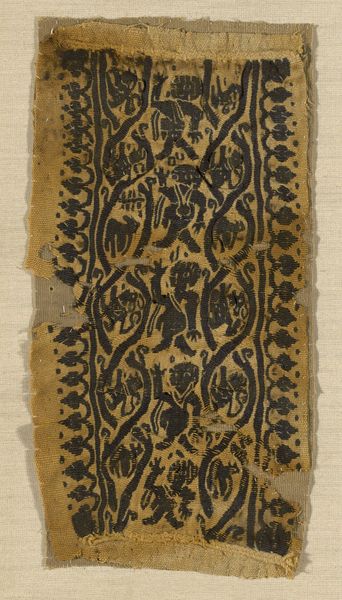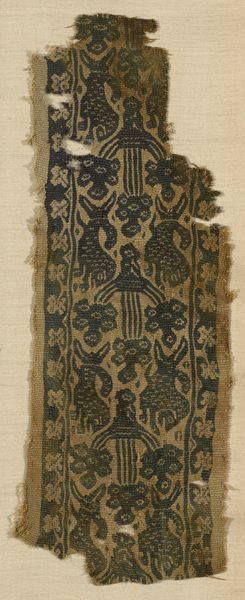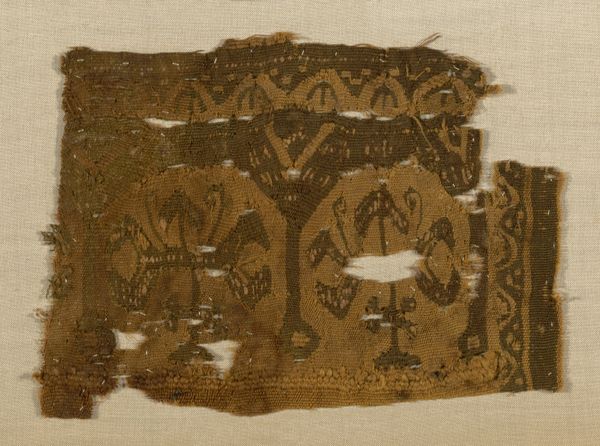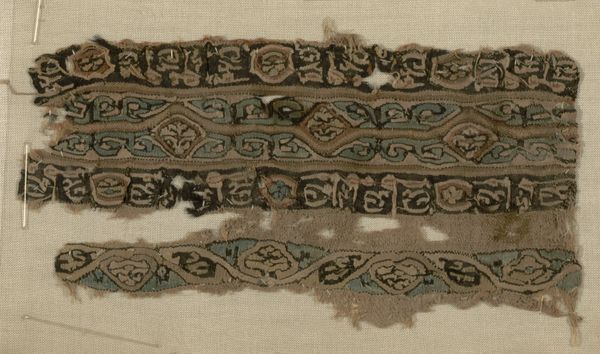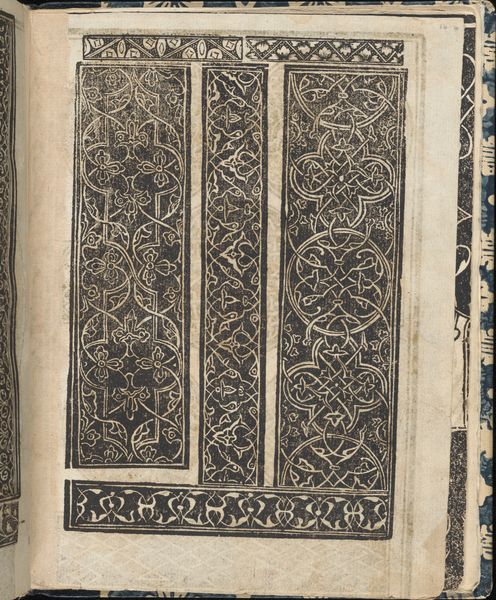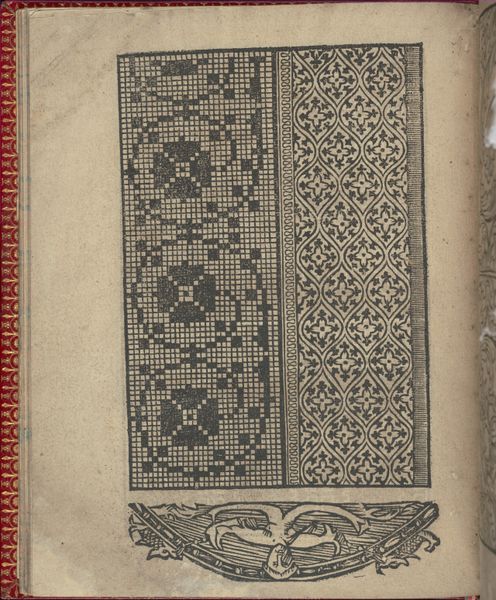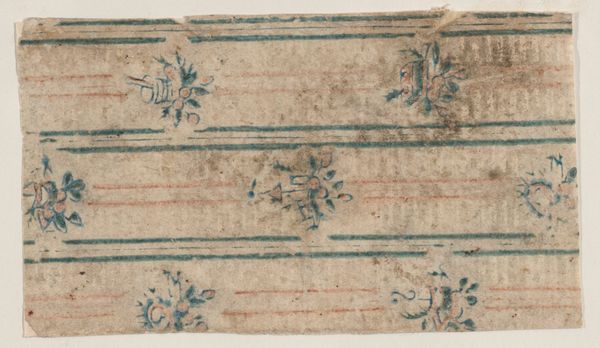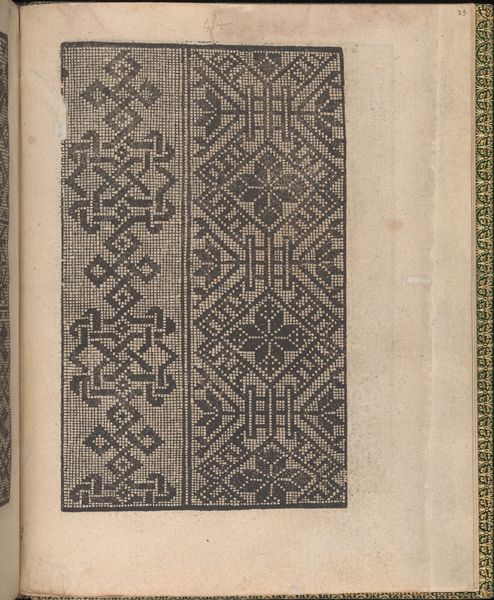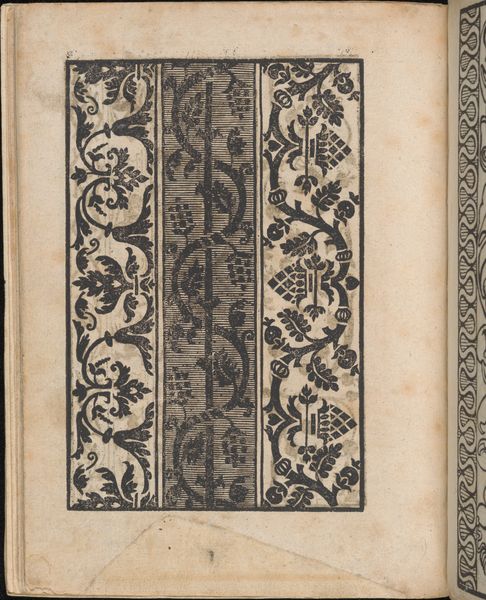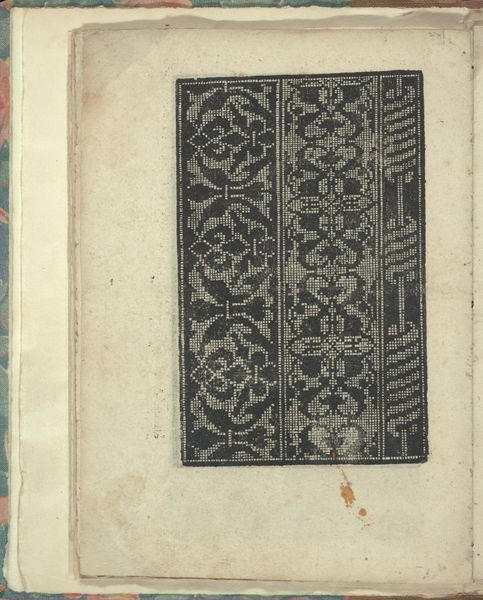
Fragment (from a Tunic) Roman period (30 B.C.– 641 A.D.), 5th/6th century
0:00
0:00
fibre-art, weaving, textile, wool
#
fibre-art
#
weaving
#
textile
#
ancient-egyptian-art
#
wool
#
form
#
romanesque
#
egypt
#
line
Dimensions: 29.2 × 17.2 cm (11 1/2 × 6 3/4 in.)
Copyright: Public Domain
This fragment from a tunic was made in Egypt, likely between the 4th and 7th centuries, by a Coptic weaver. Woven from linen and wool, it shows both the ingenuity and the labor involved in textile production of the period. The design, featuring a tree motif and decorative bands, was created using a tapestry weave, a technique that allows for intricate patterns and vibrant colors. Look closely, and you can see the subtle variations in the weave, testaments to the handcraft involved. The wool, dyed in rich shades, adds depth and texture to the composition. But beyond its aesthetic qualities, this fragment speaks to the social and economic context of its time. The production of textiles was a significant industry, employing skilled artisans who worked diligently to create these goods. The tunic itself would have been a valuable item, reflecting the status and wealth of its owner. Considering the materials, making, and context allows us to appreciate the full meaning of this artwork, blurring the lines between fine art and craft.
Comments
No comments
Be the first to comment and join the conversation on the ultimate creative platform.
